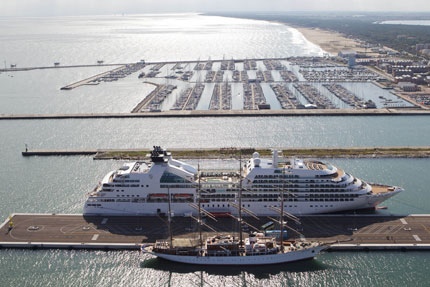China Cities Roll Out Stimulus as Changsha Targets $130 Billion
Monday, July 30th, 2012China Cities Roll Out Stimulus as Changsha Targets $130 Billion
By Bloomberg News – Jul 27, 2012 12:00 AM GMT+0800
The central Chinese city of Changsha unveiled an 829.2 billion yuan ($130 billion) investment plan, joining peers seeking to shore up local economies as national growth slows.
Changsha, the capital of Hunan province, is wooing banks to finance 195 projects, which include an airport and subway lines and will take several years to complete, the official China News Service reported yesterday.
Local governments are stepping up efforts to bolster the economy, with the cities of Nanjing and Ningbo saying over the last two weeks that they will introduce measures including tax cuts and incentives to boost consumption. Premier Wen Jiabao said July 10 that promoting investment is the key to stabilizing China’s growth, which has slowed for six quarters.
“We expect Changsha, Nanjing and Ningbo to be the start of a wave of nationwide stimulus packages, with more announcements from other local governments to come,” Shen Jianguang, Hong Kong-based chief Asia economist for Mizuho Securities Asia Ltd., said in a note yesterday. “With the central government’s tight controls on local government lending previously, there has been widespread panic among local governments in regard to the recent downturn.”
Changsha’s plan “will be spread over the next few years and eventually the actual amount of investment recorded could be discounted to a third of its original target,” said Shen, who previously worked for the International Monetary Fund. Fiscal stimulus will be the focus of policy easing in the second half and the central government will expedite approvals of infrastructure investments to stabilize the economy, he said.
Lower Costs
Guizhou, one of China’s poorest provinces, is considering more than 2,300 projects involving total investment of 3 trillion yuan related to eco-tourism, according to a July 24 statement on the provincial government’s website. The statement didn’t say when the investment would begin or how it would be financed.
Growth in China’s central and western regions is outpacing eastern areas as companies shift production inland to take advantage of lower costs. The State Council, China’s cabinet, approved a plan on July 25 to promote development in six central provinces, including Hunan, according to the official Xinhua News Agency.
Changsha’s economy expanded 12.9 percent in the first half of 2012, the local statistics bureau said, compared with national growth of 7.8 percent.
Investment Incentive
The cabinet’s plan “opens the door for local government stimulus such as that announced by Changsha,” Zhang Zhiwei, chief China economist with Nomura Holdings Inc. in Hong Kong, said in a research note yesterday. “As the leadership transition for all provincial governments is finished, new leaders have an incentive to push up investment.”
Zhao Kezhi was recently appointed as the new head of the ruling Communist Party in Guizhou, the Xinhua news agency said in a report dated July 17.
The State Council’s announcement signals policy stimulus will pick up and China’s growth “will surprise on the upside” in the second half, Zhang said. He forecasts economic expansion of 8.1 percent in the third quarter from a year earlier and 8.8 percent in the final three months after slowing to 7.6 percent in the April-June period, the least in three years.
Data on new loans and investment over the next few months will show how big the stimulus is in reality, Zhang said.
Increase Consumption
Fixed-asset investment in Changsha was 351 billion yuan last year, including both public and private spending, Zhang said. Even if the announced amount were to be spent over five years, the implied annual investment would be 160 billion yuan, about 0.5 percent of the nation’s total, he said.
Nanjing, capital of the eastern province of Jiangsu, announced on July 23 a “30-point” plan to increase consumption, including incentives for automobile purchases and loans for affordable-housing construction. Ningbo, a port city in Zhejiang, will implement 24 stimulus measures including a fund to support small businesses and tax cuts for qualified companies, the Ningbo Daily reported on July 17.
More local governments may follow Changsha’s lead as “they probably want to take advantage of the central government’s relaxation of policies and will try to get more new projects approved,” Barclays Plc economists led by Chang Jian said in a note yesterday.
Funds may not come from the central government this year. Chinese authorities see “adequate space in the existing budget to continue to adjust policies to support growth,” assuming Europe’s debt crisis doesn’t worsen, Il Houng Lee, the International Monetary Fund’s senior resident representative in China, said in an interview July 25 in the fund’s Beijing office. Revenue may come in above projections, allowing higher spending, he said.
To contact Bloomberg News staff for this story: Xin Zhou in Beijing at xzhou68@bloomberg.net; Zheng Lifei in Beijing at lzheng32@bloomberg.net
To contact the editor responsible for this story: Paul Panckhurst at ppanckhurst@bloomberg.net
